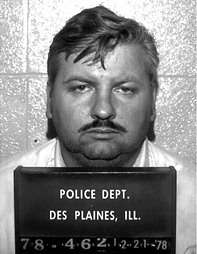 (CNN) -- A cold case detective working to identify eight bodies found in John Wayne Gacy's home in 1978 developed a new way to find other possible victims of Chicago's most notorious serial killer.
(CNN) -- A cold case detective working to identify eight bodies found in John Wayne Gacy's home in 1978 developed a new way to find other possible victims of Chicago's most notorious serial killer.
Gacy, who worked as a contractor and part-time party clown, lured his male victims with promises of construction jobs, drugs, alcohol or money for sex, or by posing as a police officer.
He was convicted in 1980 of killing 33 men and boys in the Chicago area between 1972 and 1978, but investigators always suspected he had more victims than the 28 found in the space beneath his house and in a nearby river.
His DNA was never added to the FBI's national DNA database -- officially called the Combined DNA Index System or CODIS -- because it didn't exist when he was put to death in 1994. Illinois law did not provide for the DNA of convicted killers not in prison after it was enacted in 2002 to be added.
But Cook County, Illinois, sheriff's detective Jason Moran, who discovered vials of Gacy's blood in the cold case file a year ago, also found a legal loophole that allowed Gacy's DNA and that of others to be entered into the database.
Sheriff Tom Dart hopes the new approach will give investigators around the United States another tool to solve their cold cases.
"This has the potential to help bring closure to victims' families who have gone so long without knowing what happened to their loved ones," Dart said.
Moran learned that when the state executes an inmate, the coroner lists the manner of death as homicide. The law allows for the DNA of homicide victims to be added to the database, the sheriff said.
"After review, the Illinois State Police Crime Lab deemed this interpretation acceptable and Gacy's DNA profile was to be obtained and entered in CODIS," a news release from the sheriff said.
The DNA of two other executed Illinois killers -- Walter Stewart and Durlyn Eddmonds -- have also been added, according to Will County Coroner Patrick O'Neill.
The DNA may not have qualified if these men had died of natural causes while waiting on death row, he said.
Computers have reported no matches yet for Gacy, O'Neill said.
But Moran's cold case work did lead to one of the eight unidentified bodies being identified a year ago. DNA comparisons on the exhumed body of "victim No. 19" positively identified him as William George Bundy, who was reported missing in October 1976.
™ & © 2012 Cable News Network, Inc., a Time Warner Company. All rights reserved.
- Home
- News
- Opinion
- Entertainment
- Classified
- About Us
 MLK Breakfast
MLK Breakfast- Community
- Foundation
- Obituaries
- Donate
11-24-2024 3:04 pm • PDX and SEA Weather














































































































































































































































































































